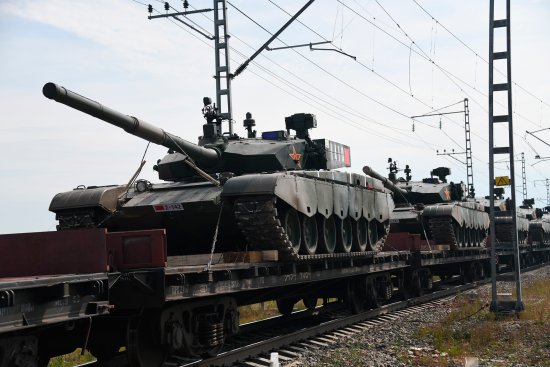
On Sept. 11, an estimated 300,000 Russian soldiers–one-third of the country’s armed forces–began joint military exercises with Chinese forces in eastern Siberia. Called Vostok-18, Russia’s war games with China have been labeled a rehearsal for a “large-scale conflict” by NATO and will put the Pentagon on edge. Should Americans and Europeans fear that Russia and China are moving closer together?
To be fair, this is less a joint exercise than a massive Russian drill with Chinese participation. Vostok-18 reportedly features 1,000 aircraft and 36,000 tanks, but only 3,200 of the troops and 900 of the tanks are from China. And Mongolia and Turkey were also invited to take part. Even so, this will be the first time the People’s Liberation Army has taken part in the quadrennial Russian military exercise, which this year is the largest since before the fall of the Berlin Wall.
Russia and China share more than just a 2,600-mile border. The most obvious commonality is a desire to prevent Washington from curbing both countries’ growing influence within their respective neighborhoods and beyond. Their dominance of the Shanghai Cooperation Organization, a Central Asian security forum made up of eight member states, helps them push back against the U.S. presence in Asia. But the Vostok exercises bring them shoulder to shoulder for an impressive show of strength. Pooling their military might reinforce the message that Washington’s criticism of their behavior inside and outside their own borders is unwelcome.
Russia and China also have a natural commercial partnership in energy. Russia is among the world’s leading exporters of oil and natural gas. China consumes vast amounts of these commodities. At a moment when the U.S. has slapped Russia with sanctions and China with tariffs, the Vostok exercises signal to Washington that the harder these two countries are pushed, the more they are incentivized to work together.
Yet Russia and China remain incompatible partners, and over time they’re more likely to compete than cooperate. First, each country wants to establish pre-eminence in Central Asia. China has invested heavily in infrastructure, transport and energy in former Soviet republics like Kazakhstan, Uzbekistan and Turkmenistan via its Belt and Road Initiative, and Russia doesn’t have the economic clout to compete. As a result, China dominates a region that Russia considers its security underbelly.
And while China wants to buy the energy Russia sells, it has many more willing suppliers than Russia has buyers. That means China can drive a hard bargain on price that limits the volumes Russia is willing to offer. This imbalance means their foreign policy interests often diverge. When, for example, tensions rise between Iran and the U.S., China would benefit from an outcome that keeps energy prices low. Russia would prefer a scenario where they rise.
There’s a limit, too, to China’s desire to embrace Russia. China’s future security and prosperity depend more on the strength of its economy than its military–and Russia is only its 11th largest foreign trade partner, behind Japan, Germany and even the Netherlands. The Chinese-Russian commercial relationship is the main factor limiting Russia’s importance to China, even at a time when U.S. tariffs have set Chinese teeth on edge.
So while China is willing to play a featured role in a Russian-choreographed show of force, its future depends more on good relations with the U.S. and E.U. than with Russia. That hasn’t changed.